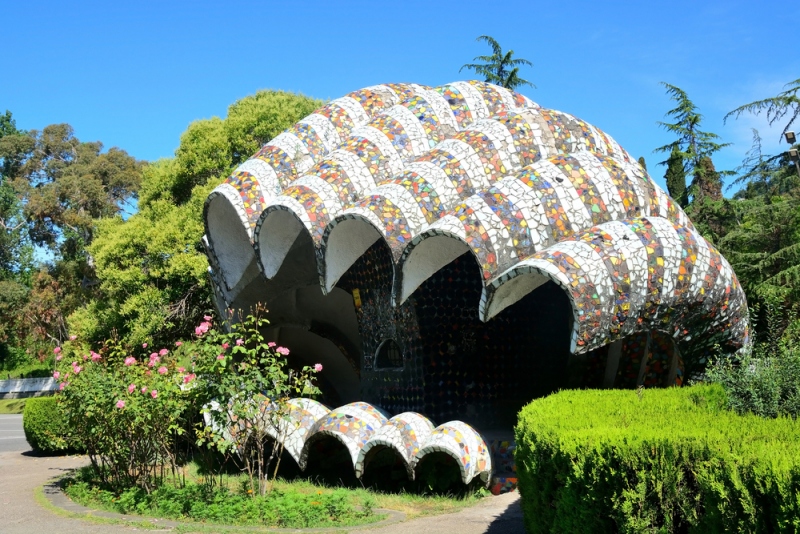Some of the most exciting, moving artworks aren’t hung in a gallery. Whether they’re permanent installations or temporary exhibits, you can find beautiful works of art outdoors, defining and defined by the landscape they are a part of. Seeking out statues, sculpture parks and outside exhibits can expand your appreciation of just what art can be.
Today, we’re taking a look at art that’s part of the landscape, to help you find something to enrich your soul and expand your mind.
Soviet Era Bus Shelters
During the era of the USSR, the government decided to bring some of the power of art to the masses, and commissioned some young artists to design bus shelters (or ‘pavilions’) that injected a colourful taste of artistic creativity into the lives of workers as they waited for buses.
One of the artists commissioned was the young Zurab Tsereteli and he made this project the foundation of a career that stretches to the present day! His shelters stretch across the Abkhazia region, near the Black Sea, and are inspired with a marine theme: they resemble giant shells, and are decorated with mosaics and murals depicting medieval folk scenes. These shelters sit within the landscape tying the ancient coastline to (what was) the cutting edge of human industry in the area, and a trip to see them can change the way you view that landscape.
The Yorkshire Sculpture Park
If you want to visit some art outside that’s a little closer to home, then the Yorkshire Sculpture Park is a fantastic resource. Housing both permanent pieces and temporary exhibitions by famed sculptors like Henry Moore and Barbara Hepworth, they are set in acres of rolling Yorkshire Countryside. Visits across the year, let you see the art and the park in different seasons, and see how they change with the weather and even the time of day.
The Angel of the North
Both previous examples have shown how art can be inspired by the landscape or reactive to it. The Angel of the North is more an artwork that imposes itself on the landscape, and redefines it. The Anthony Gormley sculpture, modelled on the artist himself, was not instantly popular, and many people took action to try and avoid it being built, but it’s now an iconic part of the landscape of the UK, beloved by locals and visitors to the area, and regularly used in film and television as a visual shorthand for the country it resides in.

